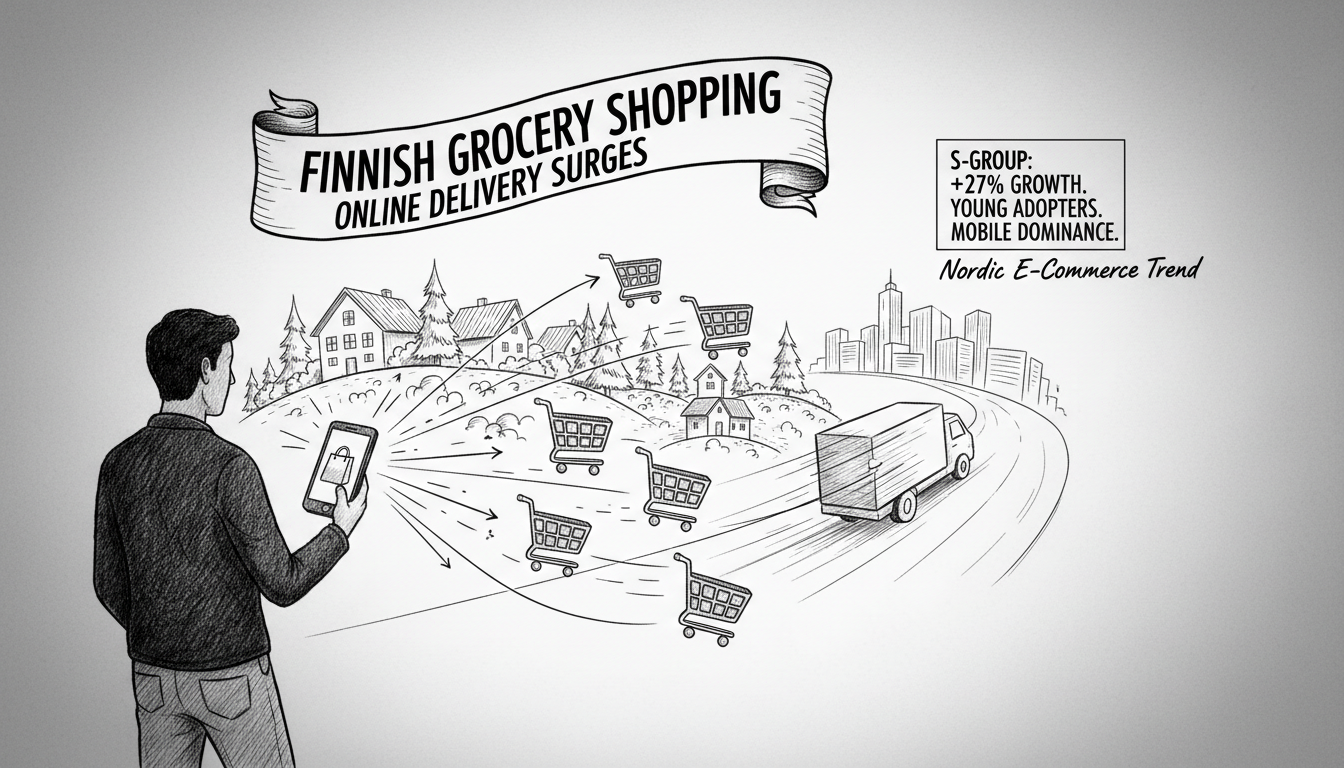Finnish consumers are rapidly embracing online grocery shopping with a notable preference shift toward home delivery. The S-Group retail cooperative reports online food sales grew 27 percent compared to last year. This growth accelerated from the previous two-year average of 20 percent annual growth.
Home delivery has now surpassed store pickup as the preferred option. Fifty-four percent of online grocery shoppers choose home delivery over collection. This marks a significant change in consumer behavior patterns.
A retail development manager explained the shift. 'Store pickup was historically the more popular choice. Customers would collect online orders then purchase fresh products in-store. Perhaps there was skepticism about online shopping reliability and staff picking skills. That has now changed,' she said in a statement.
Finland and France previously stood apart from other European nations where home delivery consistently dominated. The trend now aligns Finland with broader European shopping patterns.
Quick delivery services drive home delivery popularity. Robot deliveries account for 20 percent of all online orders. This reflects Finland's advanced adoption of retail technology solutions.
Online grocery growth spans all age demographics. Usage increased 58 percent among consumers under 24 years old. Young adults showed 51 percent growth. Single adult purchases grew 41 percent while seniors over 75 increased online shopping by 22 percent.
Mobile shopping dominates the experience. Nearly 70 percent of orders come through the S-Group mobile app. App usage grew 42 percent from last year. Customers modify their orders nearly three times on average before finalizing.
Online shoppers purchase similar products to in-store buyers but with some notable differences. Approximately 20 percent of total diaper sales occur online. Popular oat drinks also see about 20 percent of sales through digital channels.
The data reveals fundamental changes in Finnish consumer behavior. Pandemic-era shopping habits appear permanent rather than temporary. Retailers must adapt to this digital transformation that affects all customer segments.
This shift carries implications for urban planning and employment. Reduced foot traffic affects city center businesses while creating new logistics jobs. Finland's grocery retail landscape is undergoing its most substantial transformation in decades.

